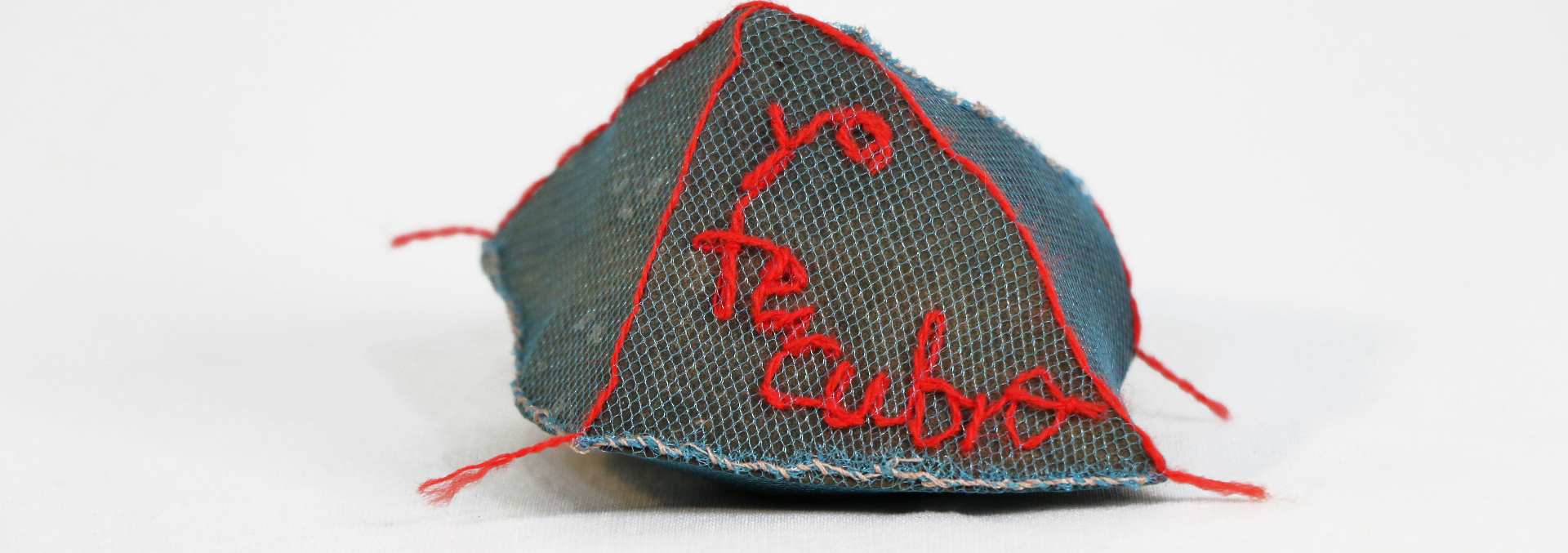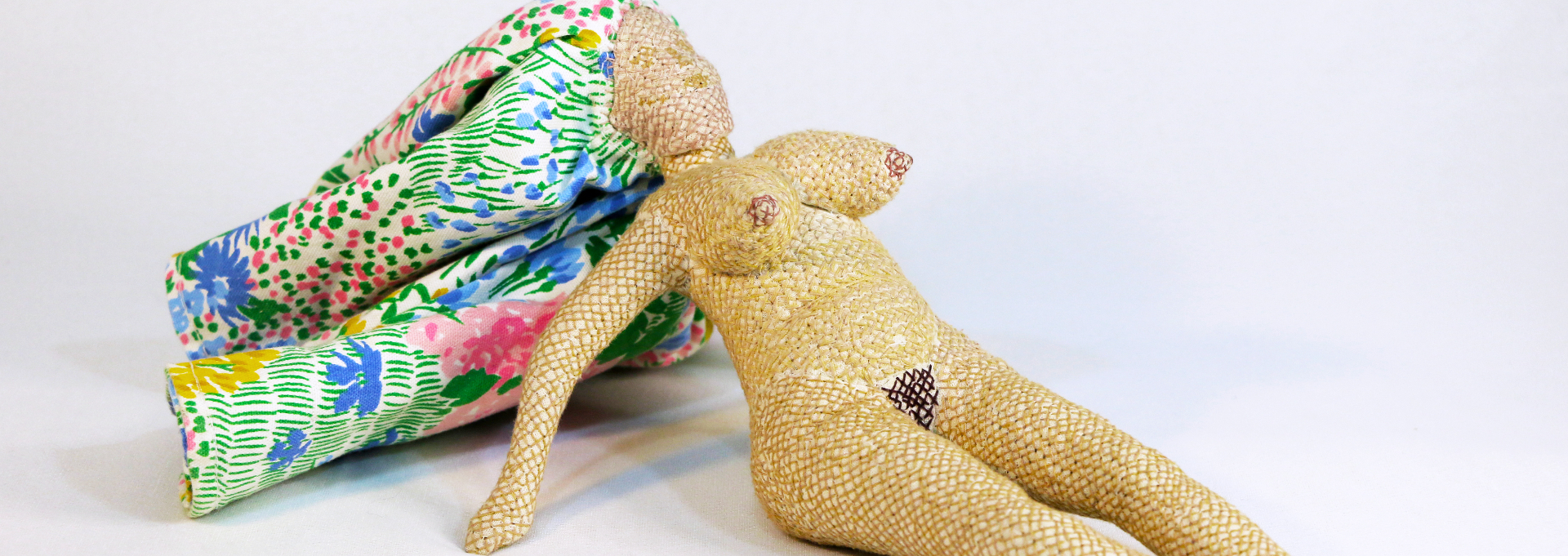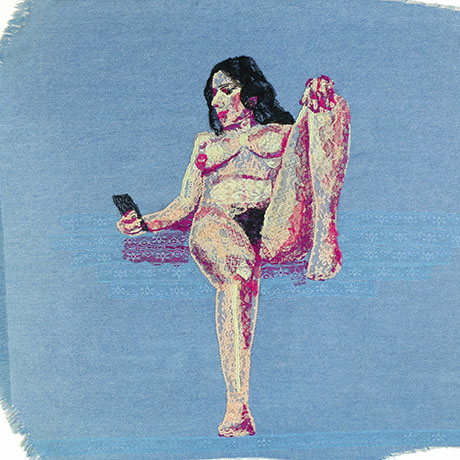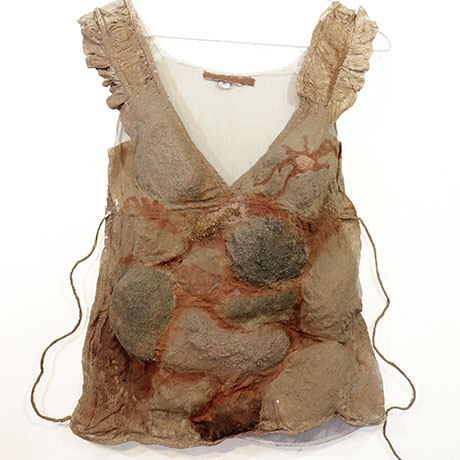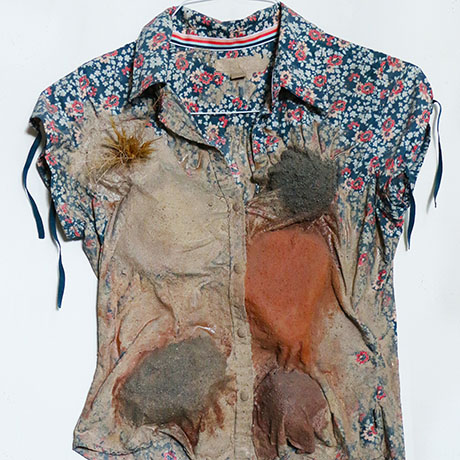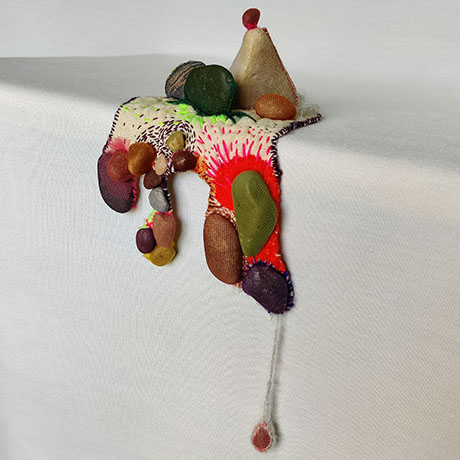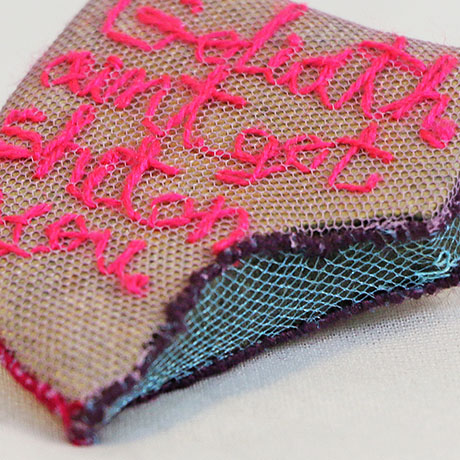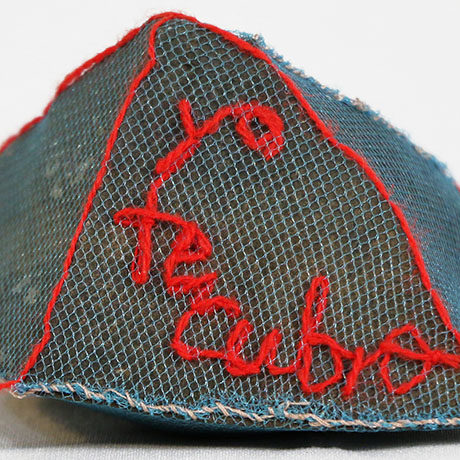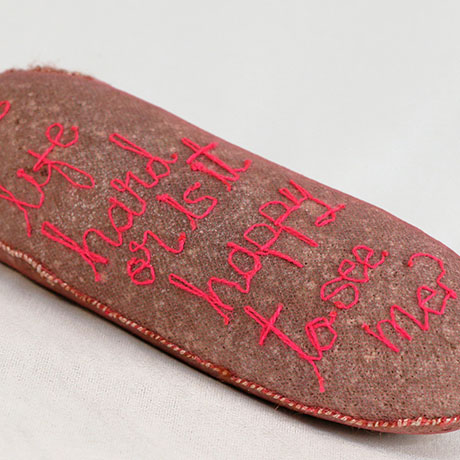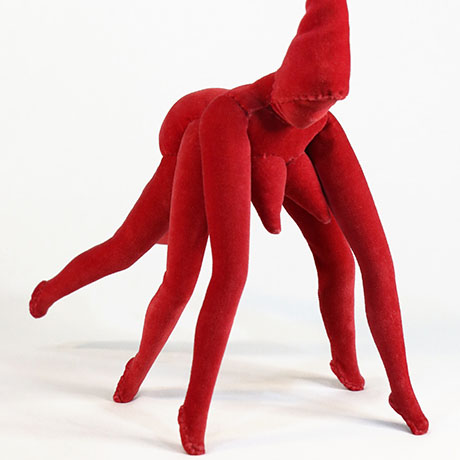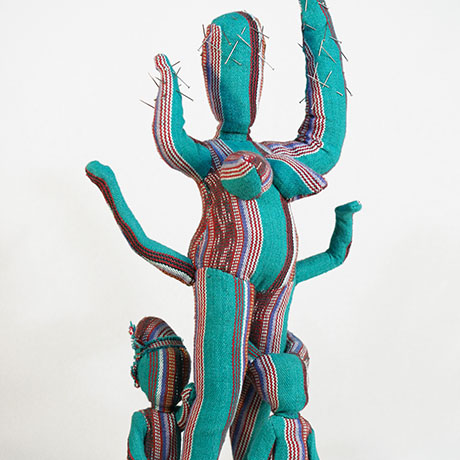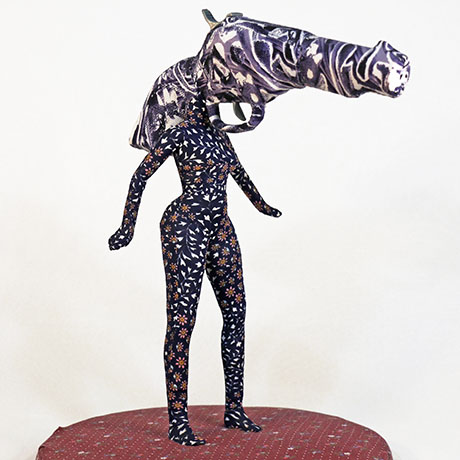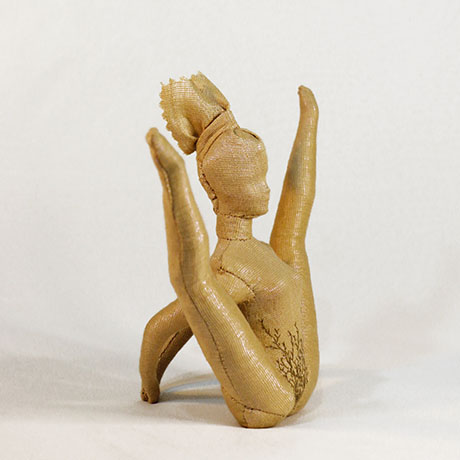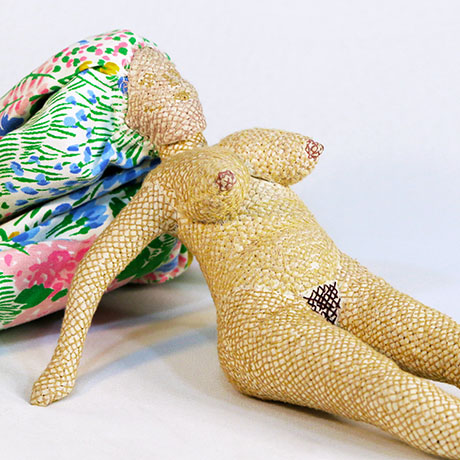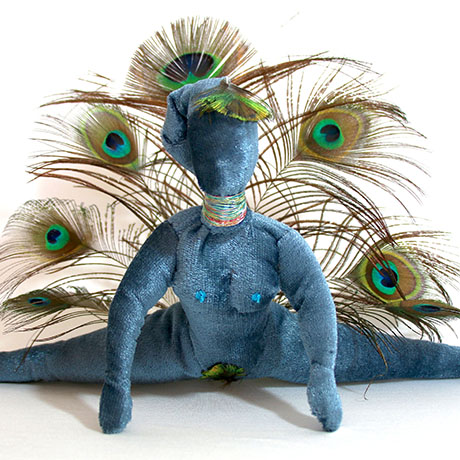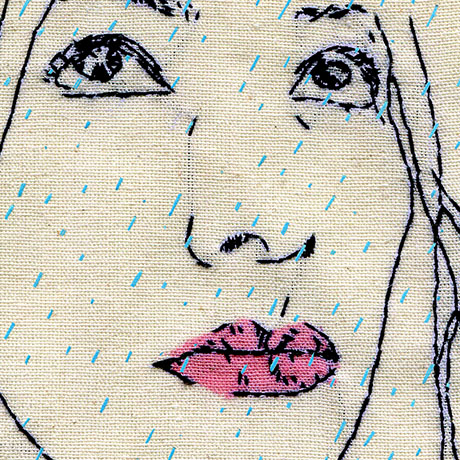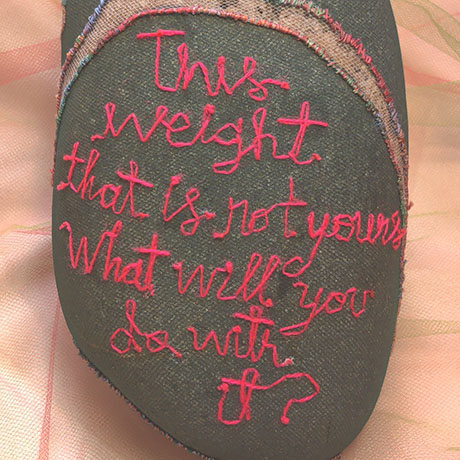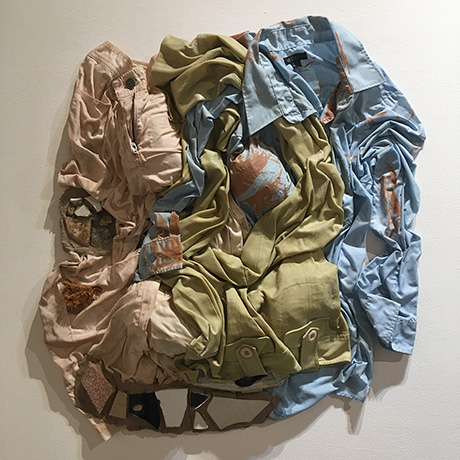Vivir al Borde: Hanging by a Thread
Marisa Raygoza
May 11 – October 5, 2024
ABOUT THE EXHIBITION
Vivir al borde means ‘living on the edge.’ I live on the north edge of Mexico, in Tijuana. Borde is similar to ‘border,’ a word we encounter frequently around here, as in ‘border patrol,’ ‘border wall,’ ‘border wait times.’ Furthermore, borde is related to the word bordar, which means ‘to embroider.’ Vivir al borde also conveys a sense of risk. Certainly working in this border town as a visual artist, using artisanal textile techniques, can be seen as engaging in unconventional and daring activities. Vivir al borde sums up important identity traits that are connected to my work as an artist. ‘Hanging by a thread’ is not a literal translation but seems like the most fitting. There is a common thread that runs through all of my work. It relates to the body, especially the female body, and its connection to its surroundings. The body leaves traces all throughout the spaces it traverses and inhabits. At the same time, those spaces leave marks on the body and shape it so it can react to the conditions given; so it can resist. The pieces for this exhibition all carry those themes.
Most of the pieces belong to one of these 3 series: ‘Piedra de apoyo emocional’ (Emotional support rock), ‘Permanent Press,’ and ‘La mona se viste como quiere’ (The doll dresses as she pleases). For the ‘Piedra de apoyo emocional’ series, I used rocks and covered them with embroidered tulle. The rocks represent nature and its force. The tulle cover, embroidered with inspirational words, symbolizes our attempts to understand nature, to connect with it in a transcendental way, and to give meaning to its mystery.
The pieces from ‘Permanent Press’ were made with discarded clothes, soil, rocks, and found objects, picked up from empty lots around my neighborhood. The series comments on consumption and its impact on the degradation of the environment, how this cycle of production and consumption exhausts natural resources and puts pressure on our own bodies as well.
The sculptures from ‘La mona se viste como quiere,’ made out of discarded Barbie dolls, fabric, and wadding, represent the diversity of identities a woman can adopt, the various ‘skins’ she can wear, and how she chooses to stand up and present herself to the world.
ABOUT THE ARTIST
Marisa Raygoza Bernal (b. 1978) lives and works in Tijuana, Baja California, Mexico. In her work she frequently makes use of found objects, fabric, and organic materials, along with weaving and embroidery techniques, to exalt aspects of her environment, exploring the network of small gestures, paths, patterns, and repetitive and sequenced actions that make up the routines of daily living. She received a Bachelor of Fine Arts at the Autonomous University of Baja California. She has been a fellow of PECDA-BC (2013 and 2023), a Baja California state grant for artists, and APROART (2017), a Mexican federal grant for art projects. In 2015 she won first place in the National Experimental Video Contest with her animated short film “Trajectory of a Tear,” which is part of the Elias-Fontes Collection. Her most recent individual exhibitions were “Permanent Press,” in the independent space I21 (Mexicali, 2019) and “A cup was broken and nobody left” in 206 Arte Contemporáneo Gallery (Tijuana, 2019). She has participated in several collective exhibitions in Mexico, the United States, England, Denmark, Germany, Italy, and Switzerland.
EXHIBITION GALLERY

